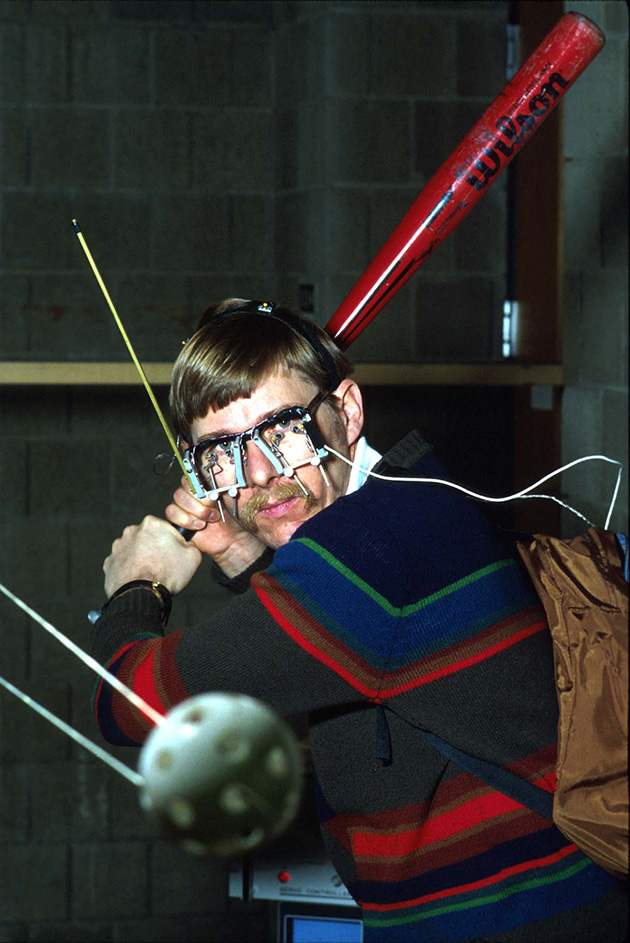Curry Vision: Explaining the science behind Stephen Curry's top-tier aim
Last week, there was a great piece on SI.com by Chris Ballard on Steph Curry’s outrageously good shooting. Curry has great mechanics, practices a ton, and readily accepts feedback from skills development guru Bruce Fraser, who has worked with a number of the greatest shooters ever. Curry also seems to understand that as the renowned hockey coach Herb Brooks famously said, “The legs feed the wolf.” In other words, Curry’s shot comes from his legs and his core and from getting his whole body into his shot with rhythm and timing. That’s the key, and it seems to be especially true as he lights it up from way downtown.
Perhaps the most important insight in the piece was Fraser’s comment that it was 75% practice and 25% talent that accounts for Curry’s exceptional performance. These two factors are interdependent, but the take-home message for us all is that most of us can get a lot better at almost anything we do by mastering proper technique and practicing.
But what about Curry’s vision? Does the hoop somehow look bigger to a great shooter? Is it like Mickey Mantle’s saying that on some days the baseball looked as “big as a grapefruit”? The great hitter Ted Williams was widely believed to have exceptional 20/10 vision, based on his Navy physical for pilot training in World War II. However, Senator John McCain (also a pilot) visited Williams late in his life and had this exchange with the great hitter, as recounted by Esquire.com’s Scott Raab:
“I told all my friends that I was coming to see you,” said McCain. “I bet fifty of them said, ‘Ask him could he really see the laces on the ball?’”
“S---, no,” Williams barked. “You’re readin’ all these sportswriters. Jesus. Listen, that ball looked like a pea to me comin’ in there once in a while. Hell, no, I couldn’t see the laces.”
So what exactly are these great athletes really seeing when they go to shoot a jumper or swing at a fastball?
Portland Timbers look for balance in conditioning and over-training in MLS
Believe it or not, vision in baseball has been widely studied by scientists, most notably by engineering professor Terry Bahill of the University of Arizona (coincidentally my Alma matter and that of most of the Warriors’ coaching staff). His most interesting observation is that even great hitters don’t see the ball all the way from the pitcher’s hand to the plate. In fact, they don’t keep their eye on the ball and instead make a few quick adjustments and get focused on where they anticipate the ball to be as it gets nearer to the plate.
Unfortunately, there is a lot less research on vision and shooting in basketball, especially the sort of off-the-dribble full-speed skills seen in the NBA. However, what I could find had some similarities to baseball in that late visual information appears to be a key to good shooting. The other interesting piece of research I found was on using a smaller hoop for free throw shooting practice. The short answer is that practicing on a smaller hoop works. Smaller hoops used to be fixtures in high school gyms. I wonder how many NBA practice facilities have them and how many of the current generation of great shooters use them. There is also some evidence that any athlete can improve his or her visual skills via training. The Air Force Academy has adopted a comprehensive program for its athletes and has been pleased with the outcome.

Terry Bahill in the Baseball Hall of Fame exhibition "Baseball As America."
Courtesy of University of Arizona
So what can we say about a great shooter’s vision? My guess is that the top 10 outside shooters of all time don’t magically see a rim as a big as a hula-hoop. More than likely they have good vision and would score well on the ability to make late visual adjustments and react accordingly. Combine these skills and traits with excellent mechanics and maniacal practice and a great shooter can emerge. They also have to know how to focus and relax under pressure. The good news is that while talent certainly matters, almost all of these factors are trainable. Bruce Fraser’s 75% rule makes a lot of sense to me.
Michael Joyner, is an expert in human performance at the Mayo Clinic, these views are his own. You can follow him on twitter @DrMJoyner





